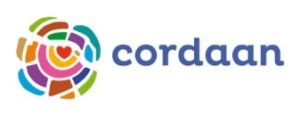Better care over the full cycle for Stroke patients; the right care at the right time, in the right place

Elderly patients who suffer from stroke have one wish: to be as independent as possible post-stroke. Stroke is a major cause of invalidity, leading to permanent nursing home admissions. In the population of 65 years and older, each year 10 to 11 people in a 1000 have a stroke. In the population aged between 15 and 64 these numbers are 1 in a 1000 each year. Besides stroke, they are typical for their high age and have an average of 4 comorbidities.
Most recovery in functional status is accomplished in the first weeks post-stroke, emphasizing the importance of starting rehabilitation as soon as possible from a medical point of view. Each year approximately 10.800 vulnerable stroke patients go to inpatient rehabilitation within skilled nursing homes. Reality is that patients often stay longer at the hospital than necessary from a medical point of view, starting their rehabilitation later in time, with large risks of not reaching optimal results. Care is delivered by at least 2 organizations, leading to fragmented care centered around the physicians instead of around the patient.
This initiative has created a collaboration between AMC and Cordaan by realizing patient centered care as if both organizations are one team. They aligned their care around the vulnerable elderly stroke patient, resulting in an integrated care service were physicians from Cordaan and AMC paired, aligned their intake process, planning, triage visits and process mapping. We organized care as in a network IPU.
In a small pilot, the collaboration of this initiative showed promising outcomes:
The hospital stay was shortened from 15 to 5 days. Starting the rehabilitation earlier post stroke, resulted in a better functional status, measured with the Barthel Index (BI), pre initiative reaching a delta BI of 4,95, and post initiative reaching a delta BI of 8,95. The inpatient time spend at Cordaan was shortened from 55 to 36 days. The total inpatient time was decreased by 29 days
Patient-Reported Experience Measures (PREMS) show that patients (and involved families) are very satisfied with the collaboration and care received in the full continuum of care.
The pilot shows shorter hospital stay and a shorter inpatient rehabilitation period, resulting in lower costs over the full cycle of care. Based on the pilot, costs can be reduced by an estimate € 400.000,- each year, for the care delivered for patients who benefit from this collaboration.
The initiative can be upscaled by collaborations between more and other organizations, all vulnerable elderly stroke patients should be able to benefit when they don’t receive the right care, at the right time, in the right place.
Several new initiatives have already started, for example between the AMC and Maria Oord (a skilled nursing home in another city) and between Cordaan and OLVG (a non-academic hospital in Amsterdam), resulting in better outcomes for more vulnerable elderly stroke patients in the Netherlands.
Upscaling for other medical conditions is also very realistic, as the collaboration is also very likely to be beneficial for vulnerable patients with other medical conditions who have the need for rehabilitation. Examples are patients with hipfracture, amputations, COPD or congestive heart failure.

